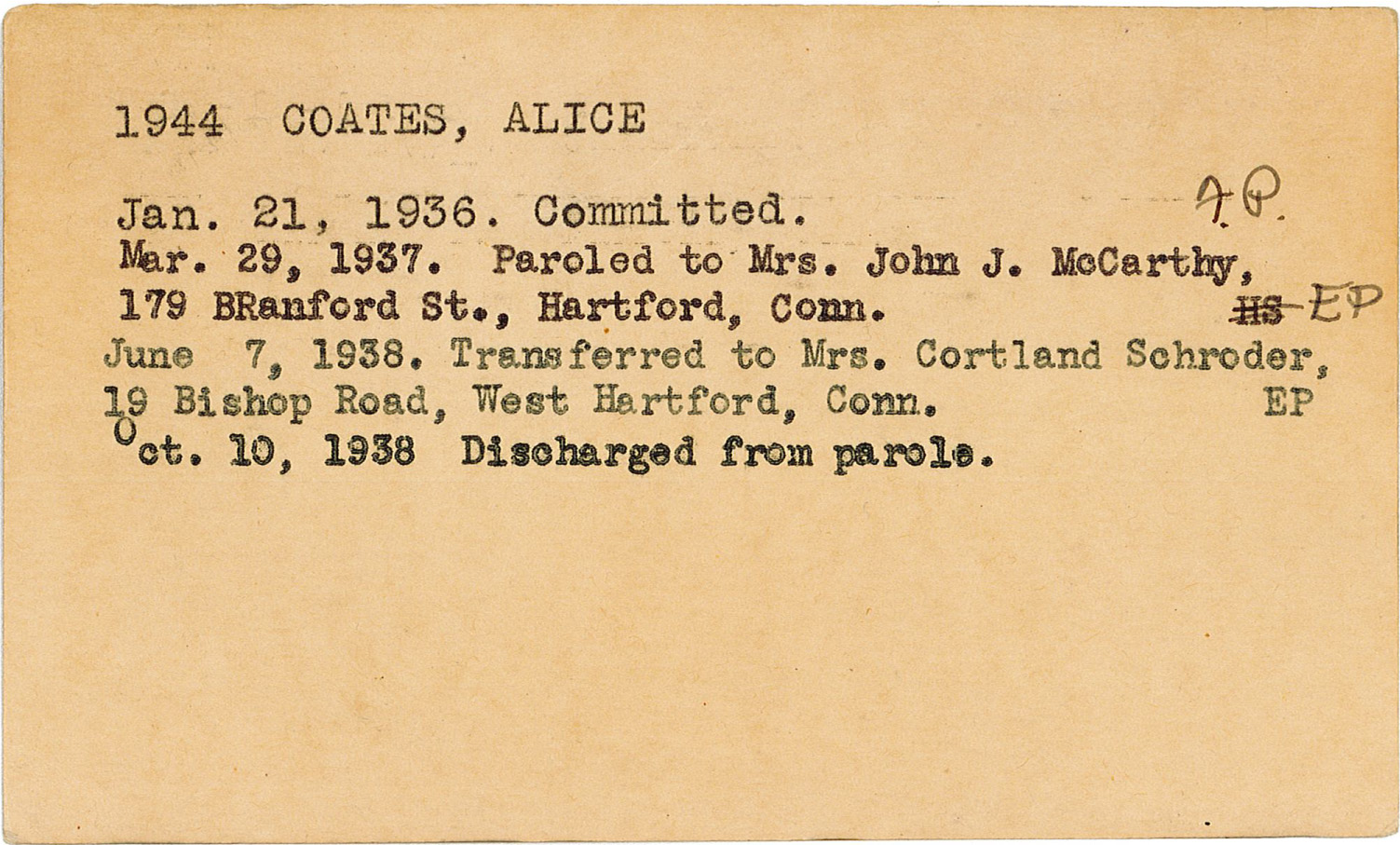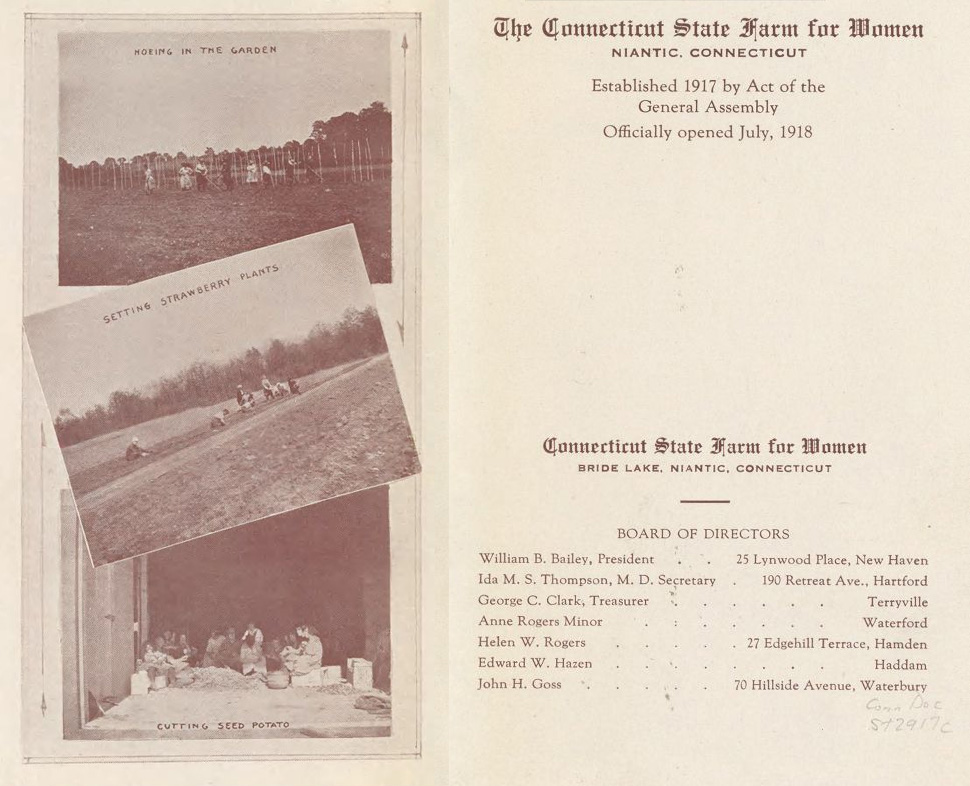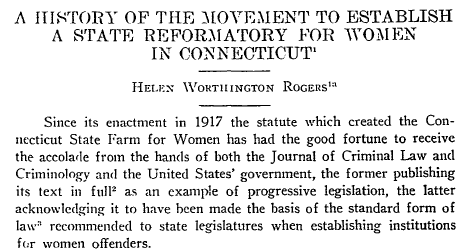Allison Norrie
Fairfield Public Schools
TEACHER'S SNAPSHOT
Subjects:
Crime & Punishment, Health & Medicine, Politics & Government, Progressive Era, Racism, Reform Movements, Women
Course Topics/Big Ideas:
Gender Roles in Economic, Political, and Social Life, Rights and Responsibilities of Citizens, Role of Connecticut in U.S. History
Grade:
High School
Lesson Plan Notes
The United States in the 1910s was a nation in transition. The industrialization of America, subsequent waves of immigration, and growing economic disparities resulted in an over-exaggerated panic over what was to be done with certain types and classes of women. In Connecticut, the voice of Katherine Bement Davis (an early activist at Jane Addams’s Hull House) proved to be the loudest in advocating for “reforming” women. Davis was a respected public figure who published extensively on the importance of institutions and governments in overseeing a reform-based approach to the justice system. In June 1918, after decades of lobbying various Connecticut governors and legislators to earmark funds, the state opened the Connecticut State Farm for Women in Niantic. The Farm was designed as a working reformatory wherein women who committed crimes such as drunkenness or sexual promiscuity could work to rehabilitate themselves in a less punitive environment compared to that of the corrections system. The Farm has evolved since then to become the York Correctional Institution, the only correctional facility for women in Connecticut.
ESSENTIAL QUESTION
SUPPORTING QUESTIONS
- What were the stated goals of the Connecticut State Farm for Women?
- What assumptions were made by those who fought to establish it?
- What “types” of women were subject to reform in the early 1900s? Why?
- What role do race and gender play in the United States criminal justice system?
ACTIVITY
Part I: Construct a class set of definitions for the following:
- Reform
- Prison
- Criminal
- Custody
- Rights
- Equity
- Delinquent
Part II: Students will break out into small groups. Using the class definitions, groups will discuss the pros and cons of “reform” versus “punishment.”
Part III: Guided class discussion
Goal: Students will analyze primary documents in groups, use the internet for research, and take part in guided conversation on the subject of women, reform, and the creation of the State Farm for Women.
Objective: Students will investigate the history of the advocacy for and subsequent creation of Connecticut’s first reformatory for women. Students will determine the pros and cons that people in Connecticut discussed during the Farm’s inception. Students will then take part in a structured discussion on the topic of whether or not the State Farm for Women should be opened.
OPPORTUNITIES FOR ASSESSMENT
- Students will debate the need for a reformatory farm for women and reflect on what they learned from the opposing side of the argument, using the graphic organizer to guide the process. Students will complete Part I of their graphic organizer prior to the debate and Part II of their graphic organizer after the debate.
- Students will research statistics, conditions, and programs for incarcerated women in Connecticut today and compare these to the State Farm for Women in the early 1900s.
RESOURCE TOOL KIT

Alice Coates, State Farm for Women Records. Selected photographs, intake paperwork, and correspondence. Connecticut State Library.

The Connecticut State Farm for Women: Niantic Connecticut. 1920. Connecticut State Library. View online.

Helen Worthington Rogers, “History of the Movement to Establish a State Reformatory for Women in Connecticut”, A, 19 Am. Inst. Crim. L. & Criminology 518 (1928-1929). Pages 518, 540.
“Turning Jail Sentences for Women into Summer Vacations…” The Hartford Courant, August 11, 1918.

“Talking About History” Graphic Organizer
ADDITIONAL RESOURCES
Places to GO
To view more documents related to the State Farm for Women, visit the Connecticut State Library, Hartford.
To make comparisons to an even earlier correctional facility in Connecticut, visit Old New-Gate Prison, East Granby.
Things To DO
Research and identify an organization that provides services or support to women who are incarcerated or have recently been released. Collect donations or hold a fundraiser to aid their efforts.
Take a look at another related primary source from this time period: Hepburn, Katharine Houghton. The White Slave Traffic in Hartford, Connecticut. The Connecticut Woman Suffrage Association. Hartford: 1913. Connecticut State Library.
Websites to VISIT
Articles to READ
Beach, Randall. “The State’s Only Prison for Women Began as a Working Farm.” Connecticut Magazine. 16 September 2018.
ConnecticutHistory.org:



